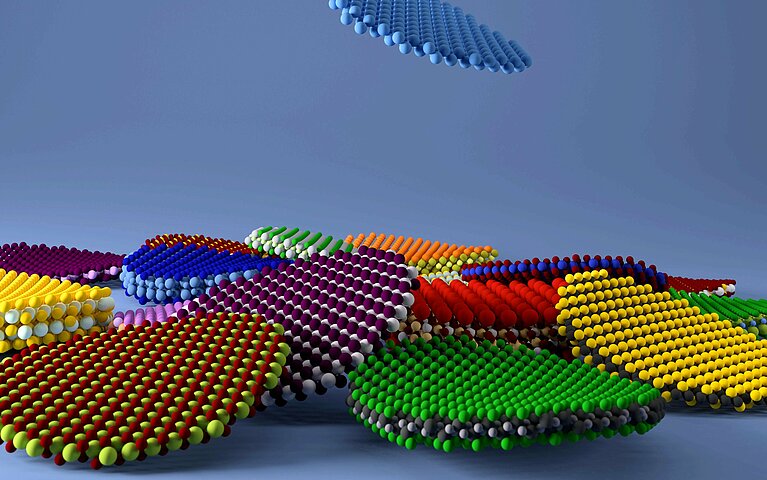March 15, 2018 - by Simone Ulmer
Ever since the successful production of graphene, two-dimensional materials have been intensively researched. Scientists Andre Geim and Konstantin Novoselov were honoured with the Nobel Prize in 2010 for extracting with tape an atom-thick layer of the new material Graphene from carbon (from the tip of a pencil), and for their research done on it. Two-dimensional materials are ascribed completely different physical properties to the three-dimensional compounds from which they derive. They are thus promising candidates for the next generation of electronic and optoelectronic applications, as Nicolas Mounet, Nicola Marzari and their team from the National Center of Competence in Research MARVEL at EPFL in Lausanne write in their article, recently published in the journal Nature Nanotechnology. Their latest research results even made the journal's front page - the team has developed a method that used the CSCS supercomputer "Piz Daint" to identify 258 promising candidates for two-dimensional compounds in one go.
Geometry and binding energy as search criteria
The researchers began their investigation with 108,423 materials known from other experiments. They first used their self-developed algorithm to filter out materials with suitable geometric properties: crystals with a layered structure. This helped them to narrow down the number to 5,619 compounds, which were then screened using high-throughput electronic structure calculations, thus fishing out materials whose layers only had weak bonding interaction between them. Using this step-by-step approach, the researchers succeeded in identifying 1825 crystal structures that may allow two-dimensional materials to be extracted. They also further tested in their simulations the crystals' mechanical stability, vibrational properties, electronic structure and potential magnetic strength for a subset of 258 promising candidates. The results showed that most of them are semiconductors.
Until now, two-dimensional materials have remained rare; only a few dozen could be produced or exfoliated from three-dimensional materials. For the team, the success of their new method in the search for two-dimensional materials is a perfect example of how computational methods can speed up the discovery of new materials. Others are interested in their approach too: Olle Eriksson from Örebro University in Sweden, who was not involved in the study and contributed an article for News & Views in Nature Nanotechnology, hopes that some of the materials will now be able to be experimentally produced. He is convinced that in future, this method will make it possible to find materials with particular desired properties using a suitable filter algorithm.
Reference
- Mounet N et al.: Two-dimensional materials from high-throughput computational exfoliation of experimentally known compounds, Nature Nanotechnology (2018), 13, 246-252, doi:10.1038/s41565-017-0035-5
- News&Views: https://www.nature.com/articles/s41565-017-0060-4
Further Information
- http://nccr-marvel.ch/highlights/2018-03-2d-or-not-2d
- The results are reproducible thanks to the deployment of the AiiDA materials' informatics infrastructure, which keeps track of the full provenance of each calculation and result: http://www.aiida.net/
